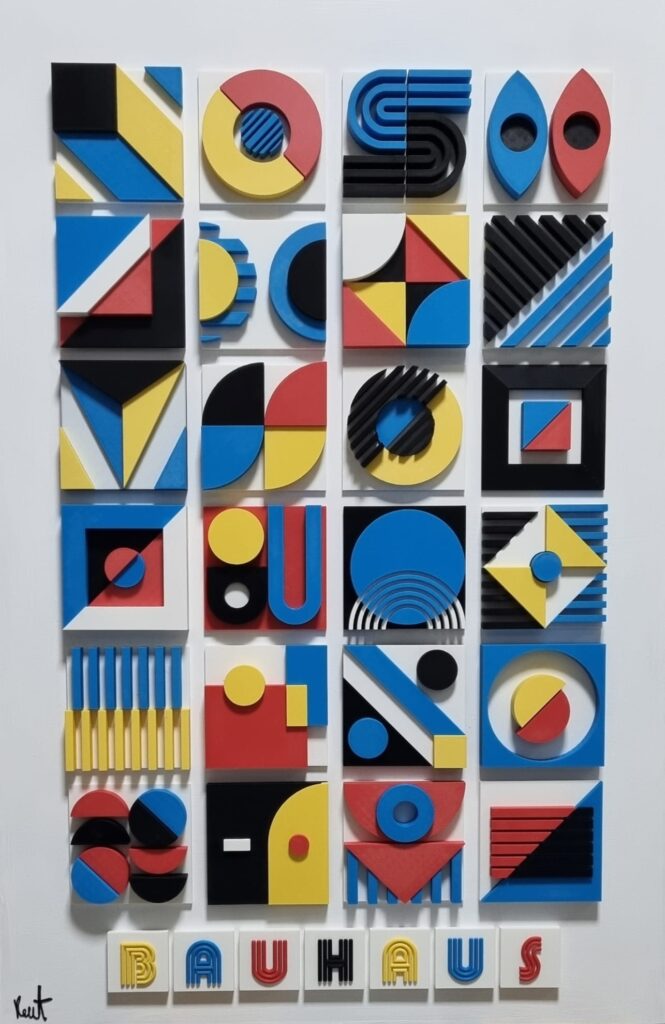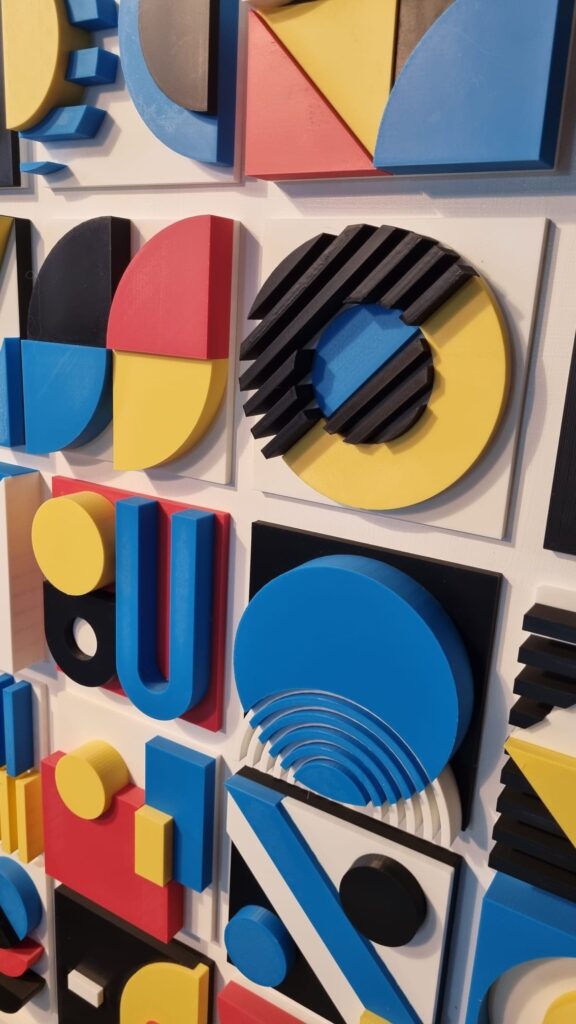This 3D-printed Bauhaus-inspired wall art blends the clarity of geometric form with the freedom of modern fabrication. Each piece is a study in balance—between structure and spontaneity, precision and play. Clean lines and bold volumes echo the principles of the Bauhaus movement, reinterpreted through layered textures and dimensional depth only possible with 3D printing. Muted primaries and industrial tones intersect in rhythmic patterns, turning the wall into a stage for form and function to meet. It’s not just a nod to design history; it’s a forward-looking celebration of how technology and timeless style can merge in your space. Ideal for collectors and creatives who value minimalist expression with a sculptural edge.
3D Bauhaus
Elements
- Functional Elegance
- Geometric Precision
- Minimalist Innovation

Creating Bauhaus-inspired art with 3D printers allows me to fuse the principles of minimalism, geometry, and functionality with cutting-edge technology. By utilizing the precision of 3D printing, I can bring intricate geometric designs to life with a level of accuracy and detail that traditional methods often cannot achieve. Each piece is crafted with a focus on clean lines, balance, and purpose, staying true to the Bauhaus ethos of form following function. The process is both a modern interpretation and a continuation of the Bauhaus philosophy—merging art, design, and technology to create functional yet aesthetically striking objects that challenge the boundaries of contemporary craftsmanship.

Creating Bauhaus-inspired shapes using 3D printing is a dynamic process where each design is composed of multiple interlocking parts, seamlessly built together to form a cohesive whole. The beauty of this approach lies in the precision of 3D printing, which allows for the crafting of individual components that perfectly fit together, creating a greater sense of unity and structure. Each piece, whether geometric or abstract, is designed with meticulous attention to form and function, ensuring that every segment serves a specific purpose while contributing to the overall aesthetic. This technique honors the Bauhaus philosophy of modularity, where each element is part of a larger design, yet stands strong in its own right, merging art with industrial craftsmanship in innovative, practical ways.